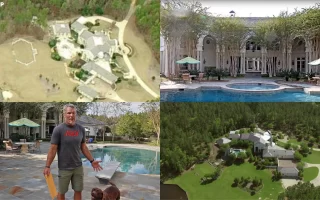Sustainable ideas have become very popular in many fields recently, including home design. As we become more aware of how our actions affect the world, doing things that are good for it has become more critical. Sustainable interior design isn’t just a fad; it’s a responsible way of considering how our design choices will affect the world and its resources in the long run.
The benefits of embracing sustainability in interior design are plentiful. It brings me joy to know that it helps reduce our impact on the environment by using fewer resources. Consequently, we enjoy healthier homes and may save money in the long run. Let’s read methods of making interior design projects more sustainable. Uncover the benefits of this ecofriendly approach.
Sustainable Strategies in Interior Design
1 – Material Selection
Choosing eco-friendly materials is crucial in sustainable interior design. The best interior designers emphasize the importance of selecting items crafted from resources like bamboo, cork, and recycled wood. Additionally, they recommend choosing materials with few or no harmful chemicals to improve indoor air quality.
2 – Repurposing and Upcycling
Instead of always opting for new furniture and decor items, consider repurposing or upcycling your existing pieces. This method not only reduces waste but also injects character and uniqueness into your interior spaces. Revamp old furniture and transform discarded materials into creative and functional pieces.
3 – Energy-Efficient Lighting and Appliances
Use energy-efficient lighting and appliances. This reduces carbon footprint and utility costs. For example, LED bulbs use less energy than old-style bulbs and last longer. Similarly, Energy Star-certified appliances are designed to minimize energy consumption without compromising performance.
4 – Natural Light and Ventilation
Maximizing natural light and ventilation in interior spaces reduces the need for artificial lighting and cooling systems and creates a healthier and more pleasant environment. Strategic window placement, skylights, and the use of light-reflecting surfaces can help achieve this goal.
5 – Water Conservation
Water Conservation is a fundamental aspect of sustainable interior design practices. Choosing low-flow faucets, shower heads, and toilets conserves water effectively while maintaining functionality. Moreover, the incorporation of rainwater harvesting systems and greywater recycling provides additional solutions, especially in larger projects.
6 – Sustainable Landscaping
Interior design extends beyond the confines of a building. Incorporating permeable surfaces for better water drainage and creating habitats for local wildlife can enhance the overall eco-friendliness of a project.
Advantages of Sustainable Interior Design
1 – Environmental Impact Reduction
Sustainable interior design helps the environment in a good way. A renovation company can assist in this effort by using fewer resources, conserving nature, and reducing energy consumption. This way, we reduce our impact and protect our planet for the future.
2 – Enhancing Indoor Air Quality
The quality of the air indoors can be uplifted significantly. Harmful chemicals and toxins in regular building materials can pollute indoor air. Sustainable interior design is essential. It promotes the use of safe materials. Make sure you choose a renovation company that follows eco-friendly strategies. This encourages the development of healthier living and working areas. It enhances breathing health and well-being for people in these spaces.
3 – Long-Term Cost Savings
Sustainable design might require more money initially but often saves money in the long run. Energy-efficient appliances lower bills. Durable materials reduce replacements, saving money in the long run. Certain sustainable design features, such as rainwater harvesting, can save costs long-term. Additionally, they offer substantial cost savings over time.
4 – Increased Property Value
People are drawn to eco-friendly homes and commercial spaces for their perceived higher value. Why the shift? It’s simple – these properties boast reduced operational expenses, promote healthier indoor settings, and have a favorable impact on the environment.
5 – Enhanced Occupant Comfort and Well-being
Sustainable interior design aims to provide occupants with comfort and promote their well-being. We include features such as sunlight, fresh air, and safe materials to attain this goal. These elements boost the well-being of those inside. Biophilic design reduces stress and enhances mental health by integrating natural components. This helps individuals in constructed spaces.
6 – Social Responsibility and Brand Image
Embracing sustainability in interior design helps the environment and shows social responsibility. It can also improve a brand’s image. Consumers and clients care more about their impact on the environment. They prefer businesses that share their values.
Conclusion
Sustainable interior design is now a must for making eco-friendly homes and offices. We can reduce environmental impact. We enjoy advantages with sustainability strategies like recycling.
The benefits of sustainable interior design include improved air quality and cost savings. It also enhances occupant well-being and property value. We can make informed choices to positively impact our surroundings and the planet.




